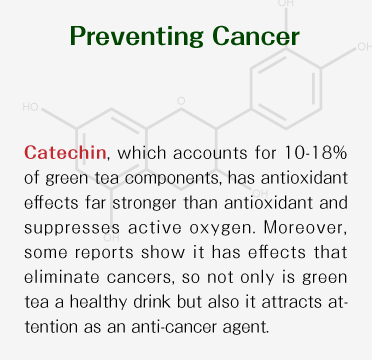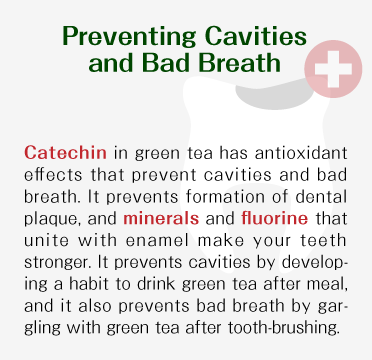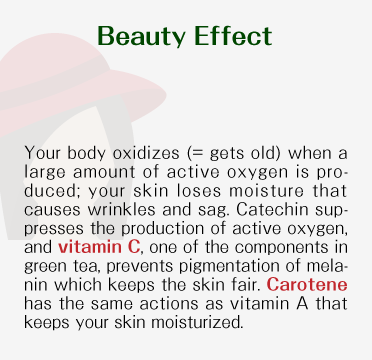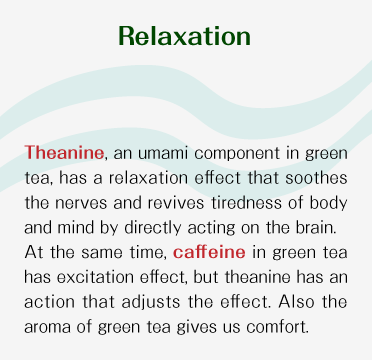Story of Tea
What is tea?
Though there is a wide variety of tea produced, let us explain Japanese tea here. Japanese tea almost equals to japanese green tea, and the tea is made from non-oxidized tea leaves.
Japanese japanese green tea is known for its variety of functions and health benefits. Not only catechin in it is said to prevent cancers, theanine brings about an effect of relaxation on the mind. Also Japanese tea has a culture as represented by Japanese art of tea ceremony and many different kinds that have soothed souls of the Japanese through the ages.
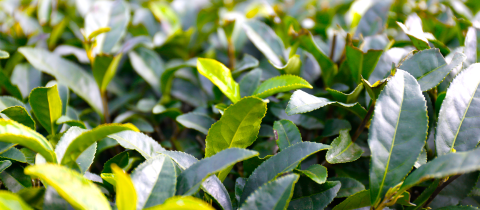
Kinds of Tea
Even tea is different in production method, areas, timing, varieties, etc. in terms of kind. There are these main types of tea: fully-oxidized tea such as English tea, partially-oxidized such as oolong tea and non-oxidized such as japanese green tea. Since most tea leaves are processed into japanese green tea in Japan, we often call it "Japanese tea".
Shizuoka, Kagoshima and Mie are well-known producers of Japanese tea, and tea leaves grown in our area of production, Mie, are called Ise-cha.
The main types of Ise-cha are "kabusecha (covered tea)", "fukamushi-sencha (deep-steamed japanese green tea)" and "Sencha (steamed japanese green tea)".
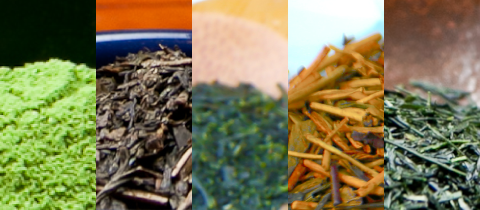
![[Oxidized] English tea, [Partially-oxidized] Oolong tea, [Non-oxidized (Japanese japanese green tea): Pan-roasted (Chinese tea)] Tamaryoku-cha, [Non-oxidized (Japanese japanese green tea): Steamed (Japanese tea)] Japanese japanese green tea](./image/english/image_abouttea_type_figure.png)
![[Oxidized] English tea, [Partially-oxidized] Oolong tea, [Non-oxidized (Japanese japanese green tea): Pan-roasted (Chinese tea)] Tamaryoku-cha, [Non-oxidized (Japanese japanese green tea): Steamed (Japanese tea)] Japanese japanese green tea](./image/english/image_abouttea_type_figure_sp.png)
|
Ohicha
Tea made from tea leaves that are grown in the shade by covering the tea plantation from direct sunlight for a certain period of time |

Matcha
Powdered japanese green tea. After grown by blocking sunlight and steamed, matcha is made from tencha, dried tea leaves after veins of leaves are removed. Tencha is ground with millstone into a fine powder. Not only it is used in tea ceremony but also used to make Japanese-style confectionery and Western-style cake and used as an ingredient for various cuisine. |
|---|---|

Gyokuro
Ohicha is tea whose leaves are grown in the shade by covering before harvesting them. This suppresses the astringent taste and increases umami (flavor) of the tea. Gyokuro is a top quality product; the leaves are covered about twenty days. |
|

Kabusecha
Kabusecha is a high-end product almost like gyokuro. The tea leaves are covered for from one to two weeks, and you can enjoy the flavor close to gyokuro. It features the beautiful color of green and mild flavor because the amount of amino acids increases by covering the leaves. |
|
|
Rojicha
Tea made from tea leaves that are grown without covering |

Fukamushicha
Fukamushicha is almost as same as sencha introduced in the next section but steamed longer. Steaming more deeply makes it powdery and rich in flavor. |

Sencha
This is the most popular japanese green tea. The leaves are picked after grown without covering, thus it has the flavor in bitterness. Historically, sencha was made by boiling, not infused in the teapot we do today. |
|

Yanagicha / Bancha
Though the names vary according to the region, it is a popular low-range tea widely enjoyed as everyday use. It is made from rather big and hard leaves picked in the summer and fall. |
|
|
Kukicha
Tea made from stems and stalks of tea buds |

Kukicha(Kariganecha)
This is a type of japanese green tea made from gathered stalks that are removed in the production of gyokuro, sencha and matcha. It features a refreshing smell and taste. |
|
Konacha
Powdered tea bud tips |

Mecha / Konacha
This is made from ground tea leaves such as sencha. It is used for tea bags or cooking as edible tea. |
|
Other
|

Genmaicha
This is a type of japanese green tea, such as bancha, combined with roasted brown rice. It features a light flavor that is harmonized with the smell of roasted brown rice and the taste of the tea. |

Hojicha
Tea leaves such as bancha and Sencha are roasted over high heat to draw out spicy aroma. It is popular to serve hojicha after meal. |
How to Prepare Japanese Tea(Kabusecha)
Here we introduce how to prepare "kabusecha" as one example. There are other methods of preparation you can enjoy, and it differs depending on the kind. In order to give off a strong flavor and rich aroma, it is popular you take time to make the tea with samashiyu (cooled down boiled water).
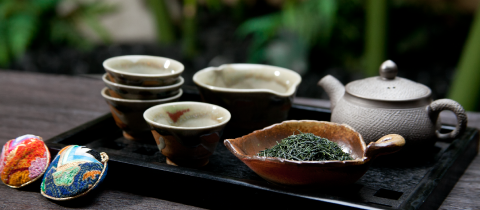
First Brewing
-
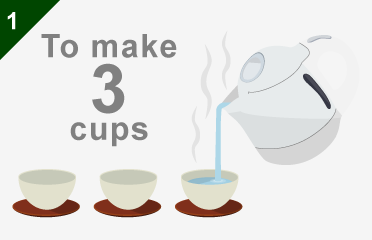
First, pour boiled water into the teacups. This is to cool down the hot water but warms the teacups at the same time. It also shows how much hot water you will need to make the tea.
-
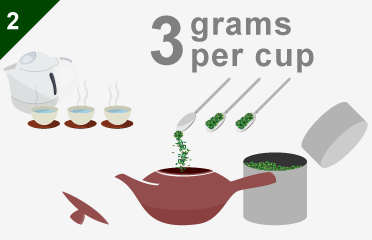
Place a tea spoon of leaves per cup in the teapot.
-

Pour the cooled-down water in the teapot. When it comes to high-class tea, using the water about 60 – 70 degrees Celsius draws out the best flavor. The cooled-down water is called "samashiyu".
-

Put the lid back on the teapot and wait for 100 seconds (about 1 and a half minute).
-
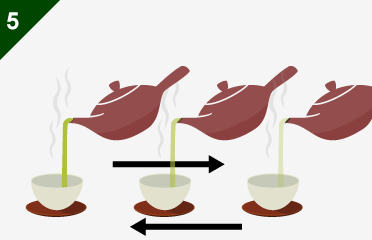
After 100 seconds have passed, now pour the tea:"mawashitsugi". "Mawashitsugi" is a pouring method that you pour a little tea at a time into each cup and pour it again backward to ensure the tea's strength is even.
-
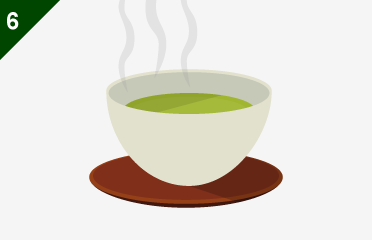
Enjoy the delicious tea.
Second Brewing

After you pour back the cooled-down water in the teapot, wait for 30 seconds in Step 4. You can enjoy great flavor of the tea even with the second brewing.
Tea Concentration and Flavor
After poring hot water, tea gets stronger over time as a matter of course. You can draw out clear flavor and aroma of the tea when brewing by taking time with samashiyu as previously introduced.
If you wish to drink lighter tea, you brew it with hotter water in a short time, and if you wish to enjoy some bitterness, you brew it with water somewhat hot and pause a moment.
You can choose however you would like to drink tea, but there is some data below as objective facts.
Umami of tea (amino acids, amide, theanine, etc.) begins to dissolve even at 60 degrees Celsius.
Astringency of tea (tannin, caffeine, etc.) begins to dissolve more at 80 degrees Celsius.
In short, "astringency" (bitterness) increases at a higher temperature, and "umami" increases at a lower temperature. Bancha, hojicha and genmaicha draws faster.
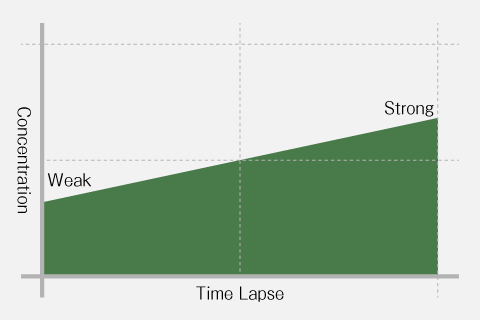

Virtue of Japanese Green Tea
Japanese japanese green tea has a diverse range of effects. Not only does it have major vitamins but also contains valuable components that other foods may not offer.
Especially, catechin, astringency of japanese green tea, has antioxidant effects far stronger than commonly used antioxidant, and it suppresses active oxygen that is said to cause many illnesses.
Japanese japanese green tea is not just delicious; it is a fully nutritious non-calorie drink. Just drinking a cup of tea after meal every day gives you a variety of benefits.
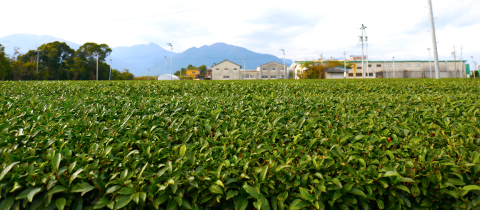
| Catechin (Astringency) | Cancer suppressing action, antitumor action, antioxidative effect, antimicrobial activity, antiviral action, lowering cholesterol level in blood, blood pressure elevation inhibitory activity, inhibitory action on postprandial elevation of blood pressure, dental prophylaxis, preventing oral odor. |
|---|---|
| Caffeine (Bitterness) | Stimulant effect, cardiotonic action, diuretic effect, analgesic action |
| Vitamin C | Antioxidative effect, prevention of cold, stress reduction |
| Potassium | Body salinity adjustment, hypotension |
| Magnesium | Function regulation of muscles and nerves, calcium amount regulation in the body |
| Fluorine | Dental prophylaxis |
| Zinc | Cell growth and multiplication, preventing fecundity disorder |
| Calcium | Making teeth/bones, regulating effects of heart, brain, hormones, etc. |
| Flavonoid | Preventing oral odor, vascular wall reinforsement |
| Theanine (Umami) | Relaxation effect |
| Gamma-aminobutyric acid | Hypotension |
| Vitamin B1 | Recovery from exhaustion, functional regulation of heart/digestive system/nervous system |
| Vitamin B2 | Mucocutaneous protection, suppressing harm of fatty acid peroxides |
| Niacin | Skin disease prevention |
| Folic Acid | Anemia prevention |
| Vitamin E | Antioxidative effect, aging prevention |
| β-carotene | Antioxidative effect, anticancer activity, mucocutaneous protection/reinforcement |
| Chlorophyll | blood cholesterol normalization, cancer prevention |
| Dietary Fiber | Hypoglycemia, excretion effect of toxic substances in the intestines |

